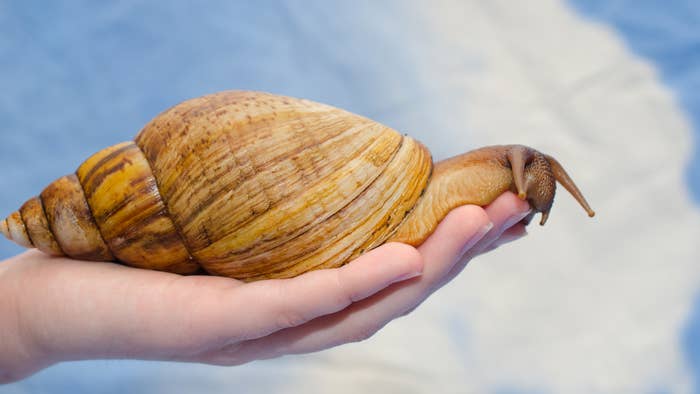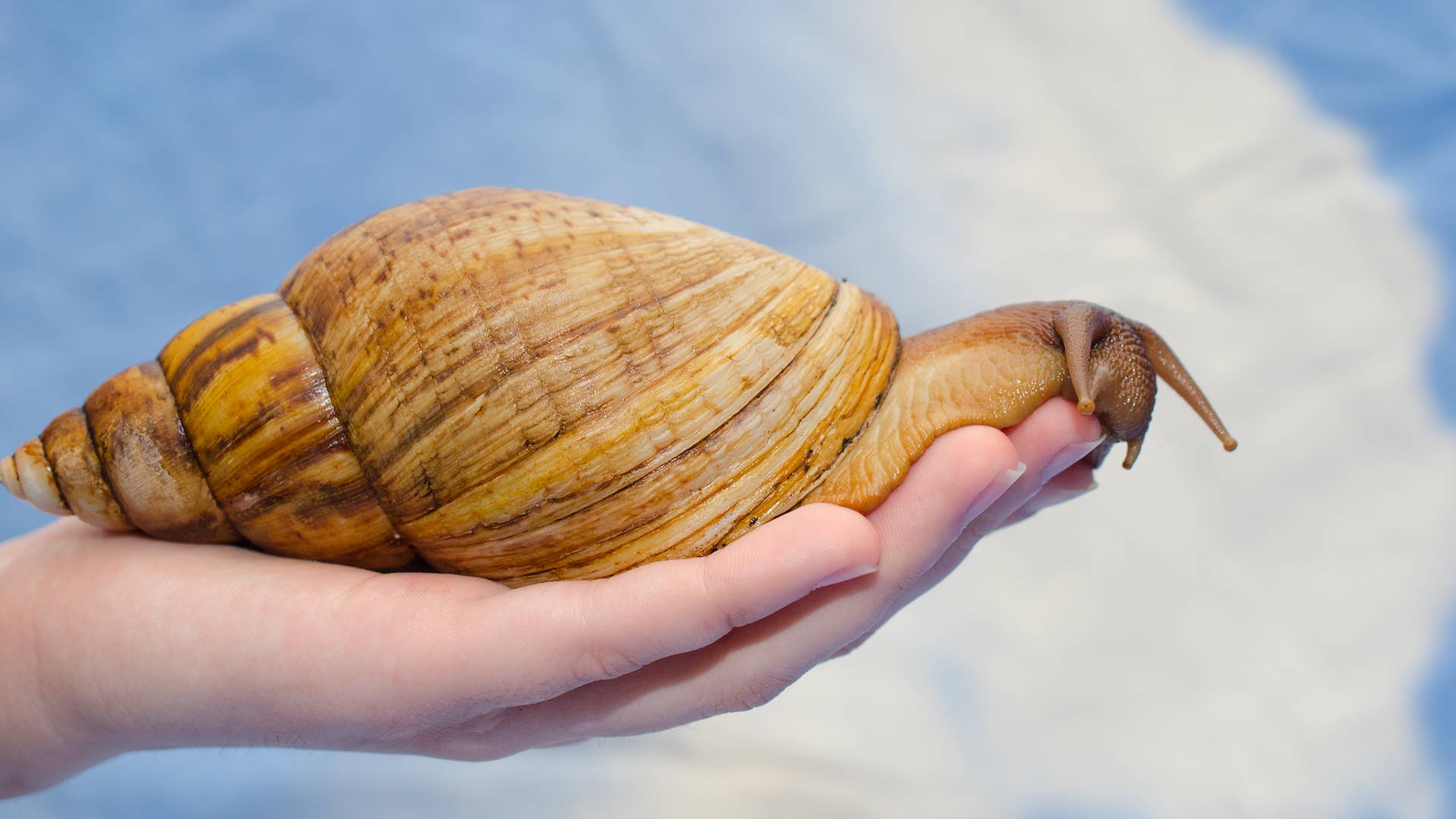
A Florida county has been forced into quarantine after officials confirmed the presence of a dangerous snail species.
The Florida Department of Agriculture and Consumer Services announced the finding last week, when a master gardener reported seeing a Giant African Land Snail in the New Port Richey area of Pasco County. According to the department, the snails are known to carry “rat lungworm,” a form of parasite that can cause Meningitis in humans and livestock.
The snails can reportedly reach 8 inches in length and 5 inches in diameter, and can lay more than 1,200 eggs per year.
“The Giant African Land Snail is one of the most damaging snails in the world and consumes at least 500 different types of plants,” the FDACS wrote. “These snails could be devastating to Florida agriculture and natural areas as they cause extensive damage to tropical and subtropical environments. The snails also pose a serious health risk to humans ...”
In wake of the finding, the Florida Department of Agriculture’s division of plant industry has established a quarantine zone that spans nearly 6 miles. Authorities will carry out an eradication program in the region, treating properties “with a metaldehyde-based molluscicide, aka snail bait.”
“It is unlawful to move the giant African land snail or a regulated article, including but not limited to, plants, plants parts, plants in soil, soil, yard waste, debris, compost or building materials, within, through or from a quarantine area without a compliance agreement,” the FDAC wrote.
A spokesperson for the department told USA Today the eradication process began Wednesday and can take up to three years.
The snails were detected in Florida in 1969 and were eventually eradicated six years later. The species was found once again in Miami-Dade County in 2011, but wasn’t eradicated until October of last year.


